As a grant writer, you know that developing a compelling grant proposal can be a challenging task. That’s why many grant writers are beginning to turn to artificial intelligence tools like ChatGPT to help them generate content and structure for their grant drafts.
While these tools can be useful in providing a starting point, it’s important to remember that they are just that: a starting point. To truly create a winning grant proposal, it’s essential to review and revise the content generated by ChatGPT. By doing so, you can ensure that the proposal is tailored to the specifics of your organization and the funder you are applying to, and that it effectively communicates the unique value of your proposed project.
Step 1: Review the grant draft created by ChatGPT
The first step in developing and revising a grant draft is to review the content created by ChatGPT. This content will likely include an overview of the grant proposal, a statement of need, a description of the proposed project, a budget, and a timeline. Take some time to read through the content carefully and make note of any areas that require clarification or elaboration.
Keep in mind that ChatGPT is not good at incorporating research. If it does incorporate research, you have to check whether it is accurate and even a real source. Yes, it will often make up names of articles, books, and even authors. What I love about it is that it shows you places where your argument needs support with research.
Step 2: Flesh out the introduction of the grant draft
The introduction and overview of the grant proposal should provide context for the proposed project and explain why it is necessary. Use the content created by ChatGPT as a starting point, but be sure to provide additional details and background information about your organization and work. Unless you give ChatGPT the details on your organization’s mission and history in your prompt, it won’t know to incorporate it (even if you state the name of your organization and where it’s located). It’s not pulling your data from the internet. You have to provide it. But the good thing is you can literally input a bulleted list of your organization’s basic info: name, founder’s name, location, date of founding, type of nonprofit, mission, and any other details into ChatGPT and tell it to generate an organizational history and it will.
You can also just use our organizational history generator!
Step 3: Refine the statement of need
The statement of need is a crucial part of the grant proposal, as it explains why the proposed project is necessary and why the funder should care about it. Use the content created by ChatGPT as a starting point, but be sure to make the statement of need as clear and compelling as possible. As I said, you can’t rely on ChatGPT to incorporate real data and research, so you’ll need to add support yourself. The evidence you incorporate should support your view of the problem (both causes and effects) and explain how the proposed project will address the problem or need in a unique and effective way.

Step 4: Expand on the proposed project
The proposed project section of the grant proposal should provide a detailed description of the project itself, including goals and objectives, methods, and expected outcomes. Use the content created by ChatGPT as a starting point, but be sure to provide additional details and specifics where necessary. ChatGPT is really good at coming up with project activities, but only you know what you really do or could do. So go through each project activity generated by ChatGPT and add to/revise it.
Step 5: Revise the budget and timeline
The budget and timeline sections of the grant proposal are highly specific to your organization. Use the content created by ChatGPT as a starting point, especially if you’ve never made a budget for the project or program you’re requesting support for, but be sure to review and revise these sections carefully. Make sure that the budget is realistic and that all expenses are justified, and ensure that the timeline is feasible and accounts for potential delays or setbacks. One key to making sure your budget is comprehensive is to review it alongside your project description and make sure every activity you list there is supported with all of the budget line items necessary to make it happen. Same with the timeline.
Step 6: Revise and refine
Once you have a complete draft of your proposal, it’s time to further revise and refine your work. You can use ChatGPT’s to revise paragraphs, sentences, or entire sections. You can even use it to proofread and edit. Simply input the text you want revised into ChatGPT and ask it to revise for whatever: clarity, length, sentence structure, word choice, etc. Be specific about what you want it to do differently. For example, you might take the statement of need and paste it into ChatGPT and ask ChatGPT to make it more engaging. Then it will. You can also regenerate responses if you don’t like what it created.
Be sure to proofread your proposal carefully, checking for errors in grammar, spelling, and punctuation. Consider having someone else read your proposal to provide feedback and identify areas that may need further work.
Finally, confirm that your proposal meets all of the funder’s requirements and guidelines, and hit submit!
Want to learn how to develop a full grant proposal using AI?
Want a step-by-step guide on how to develop a grant proposal using ChatGPT in just one hour? And then actually have the time to write your own proposal live with Krista?
Get on the waitlist for our comprehensive “Write Your Grant in 1 Hour Using AI Training + Workshop” on April 3 & 4!







JayCee Stennis
March 16, 2023 10:52 amGreat info Dr. K